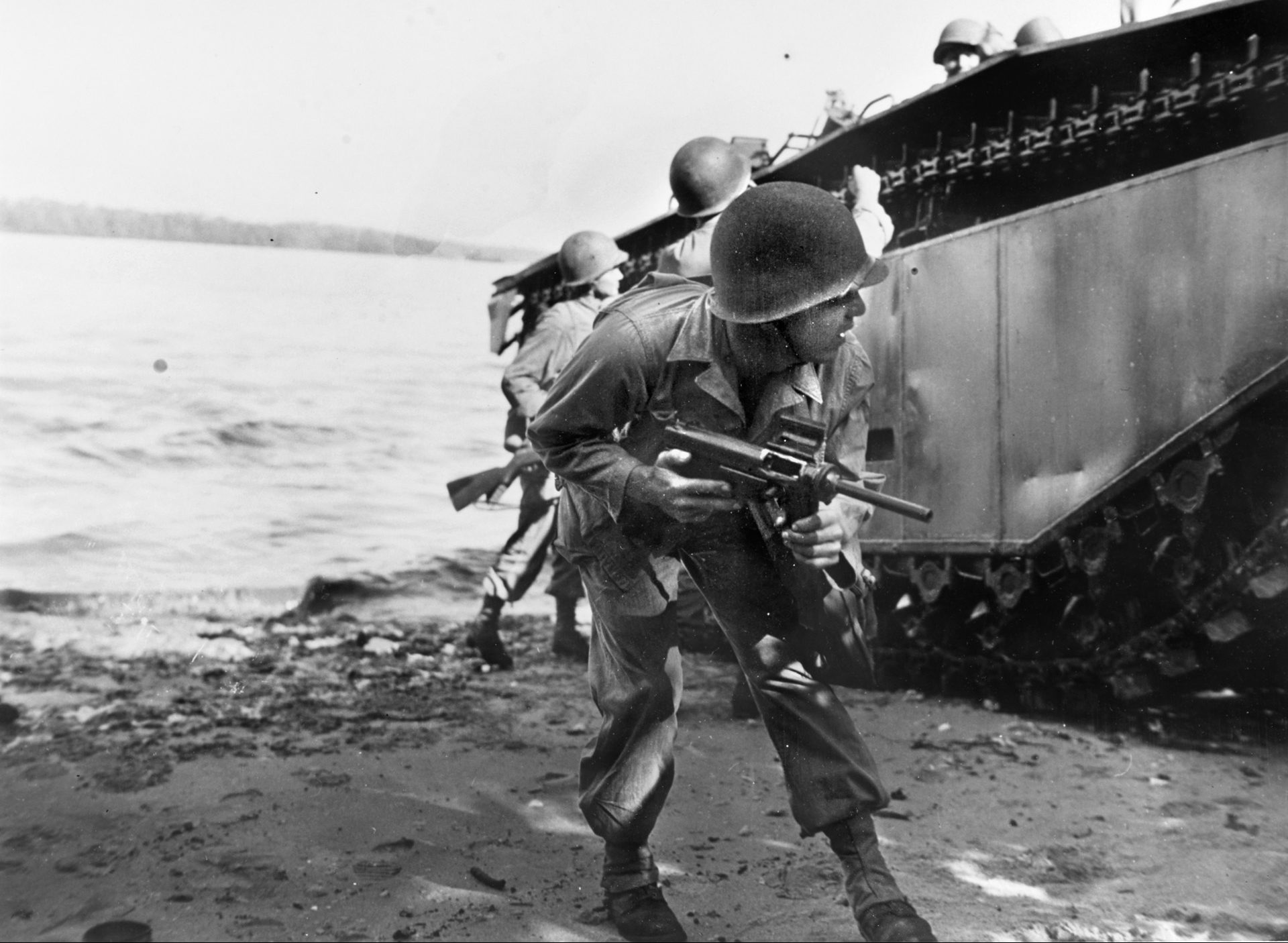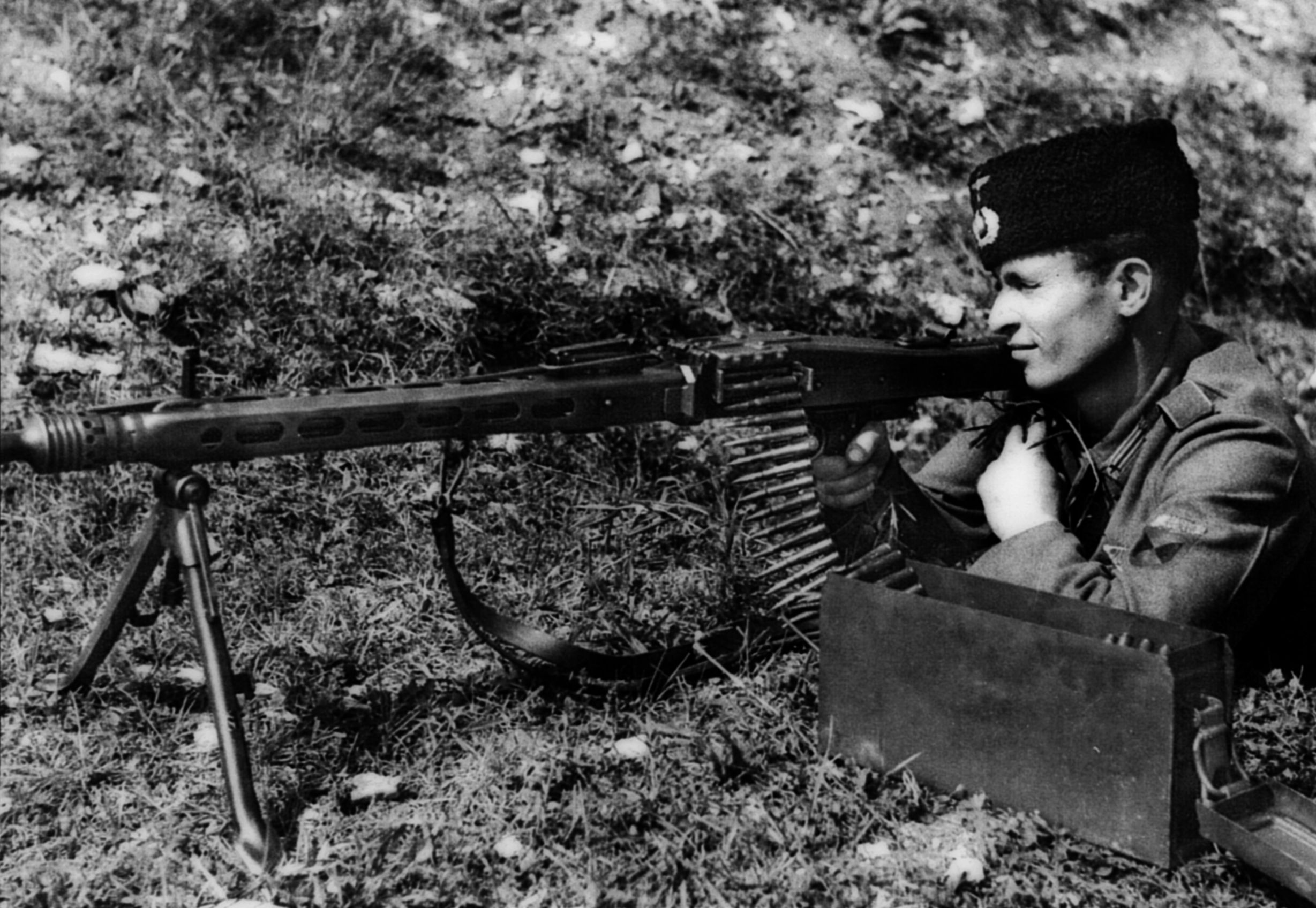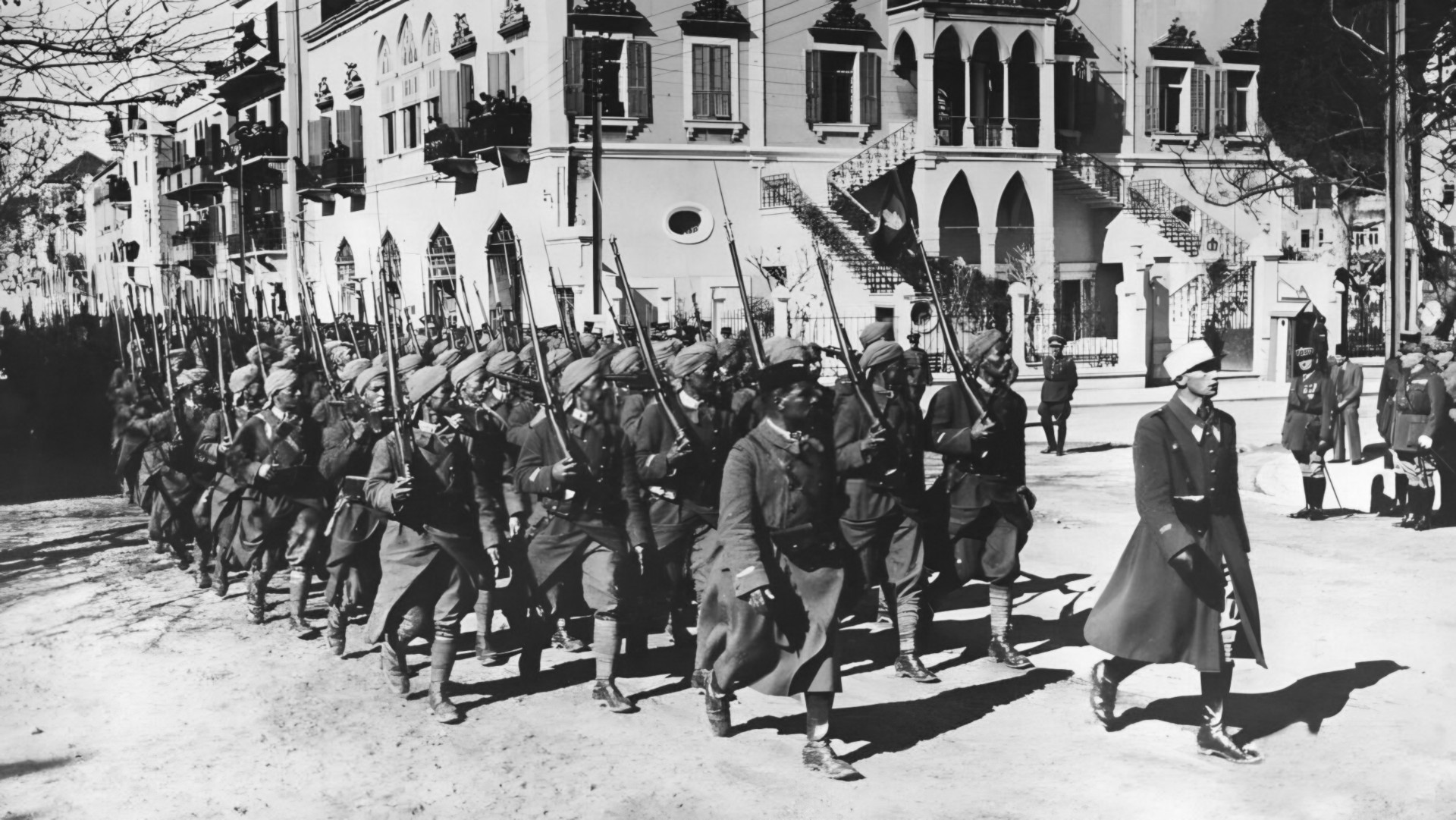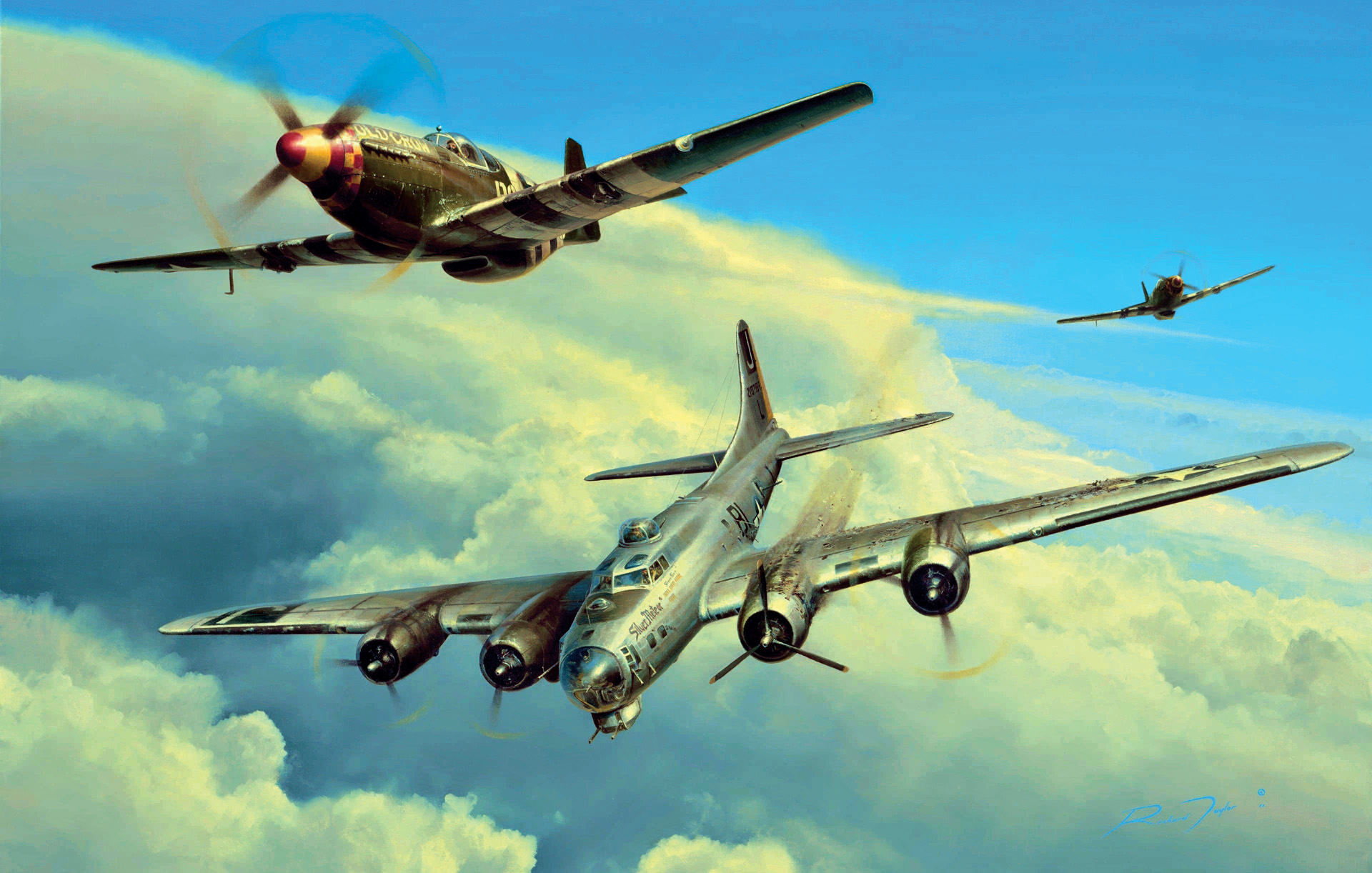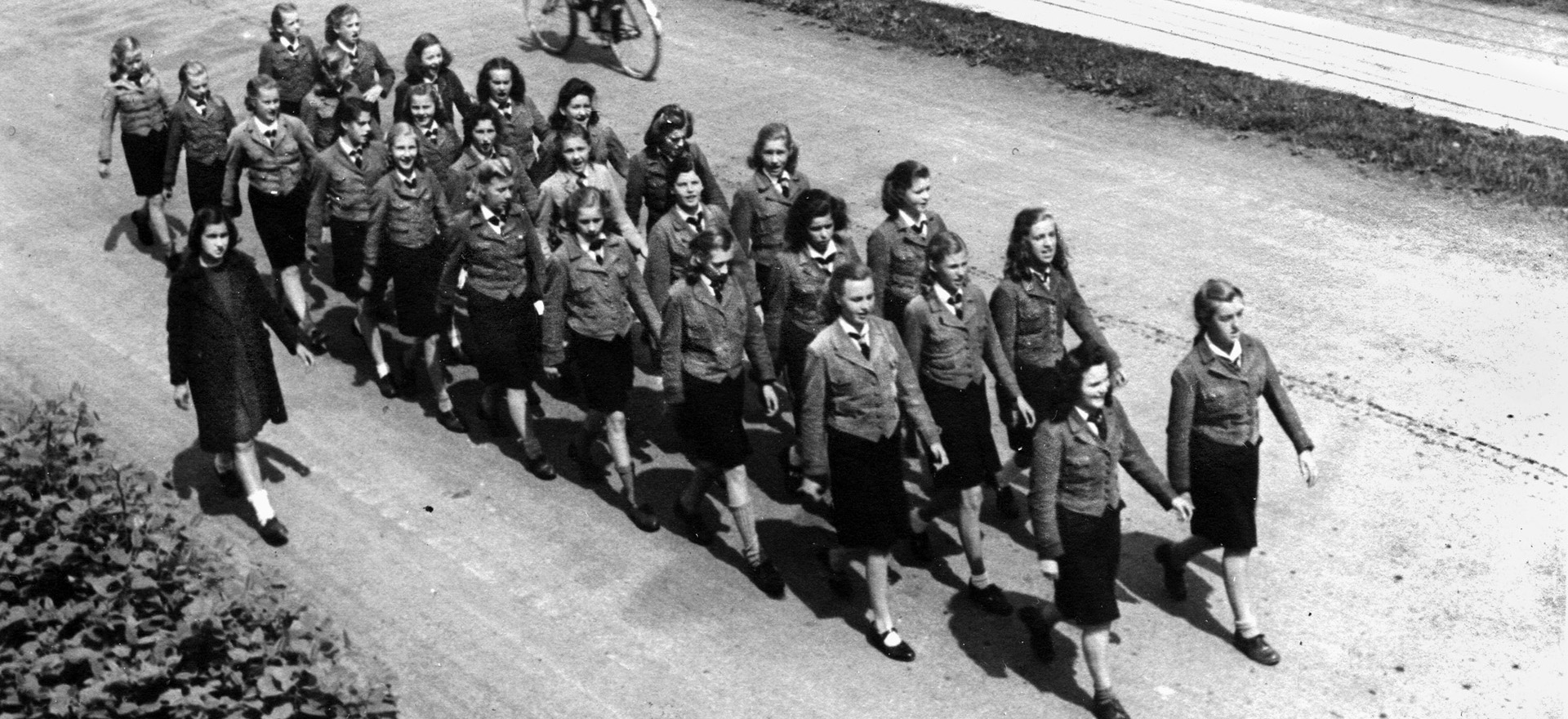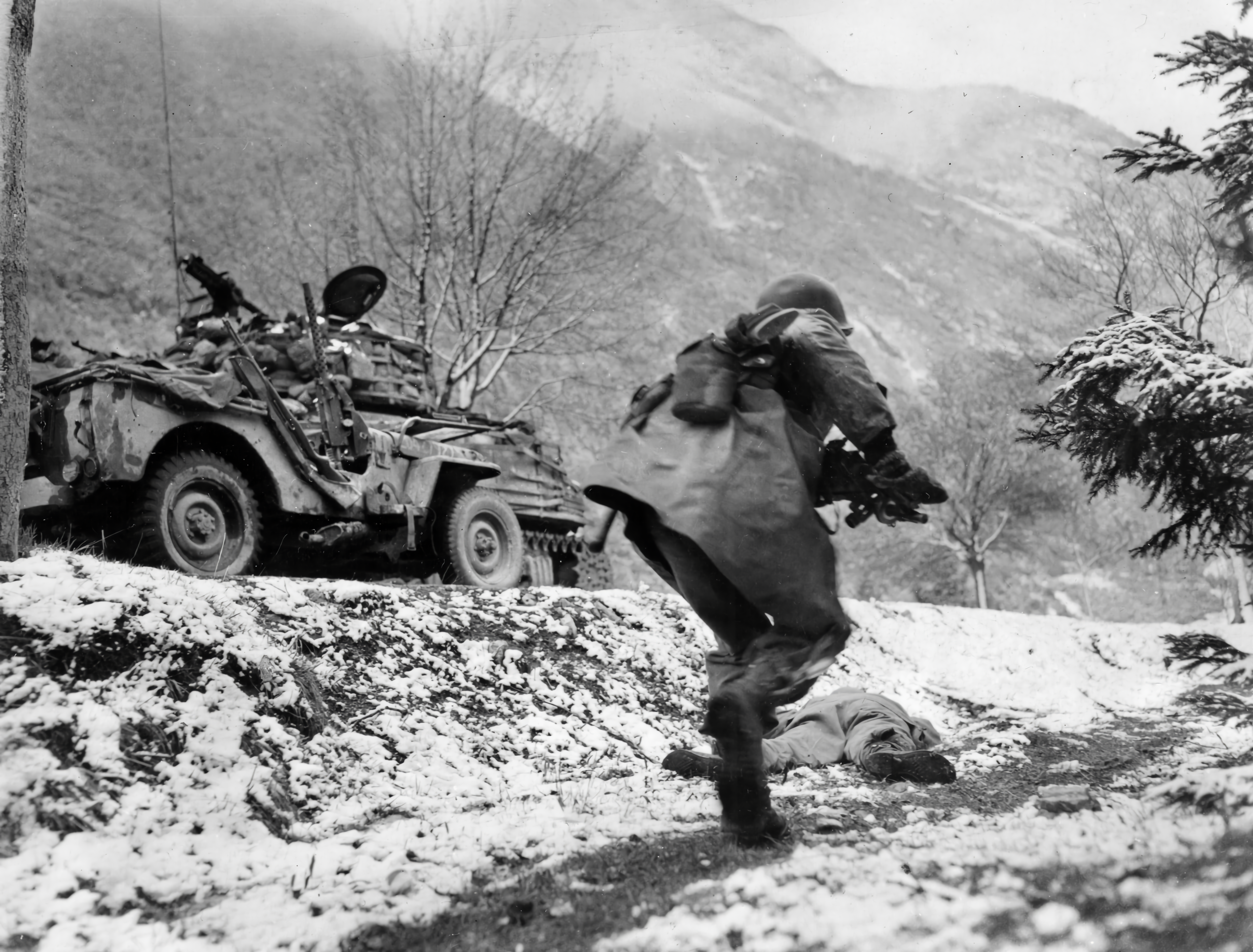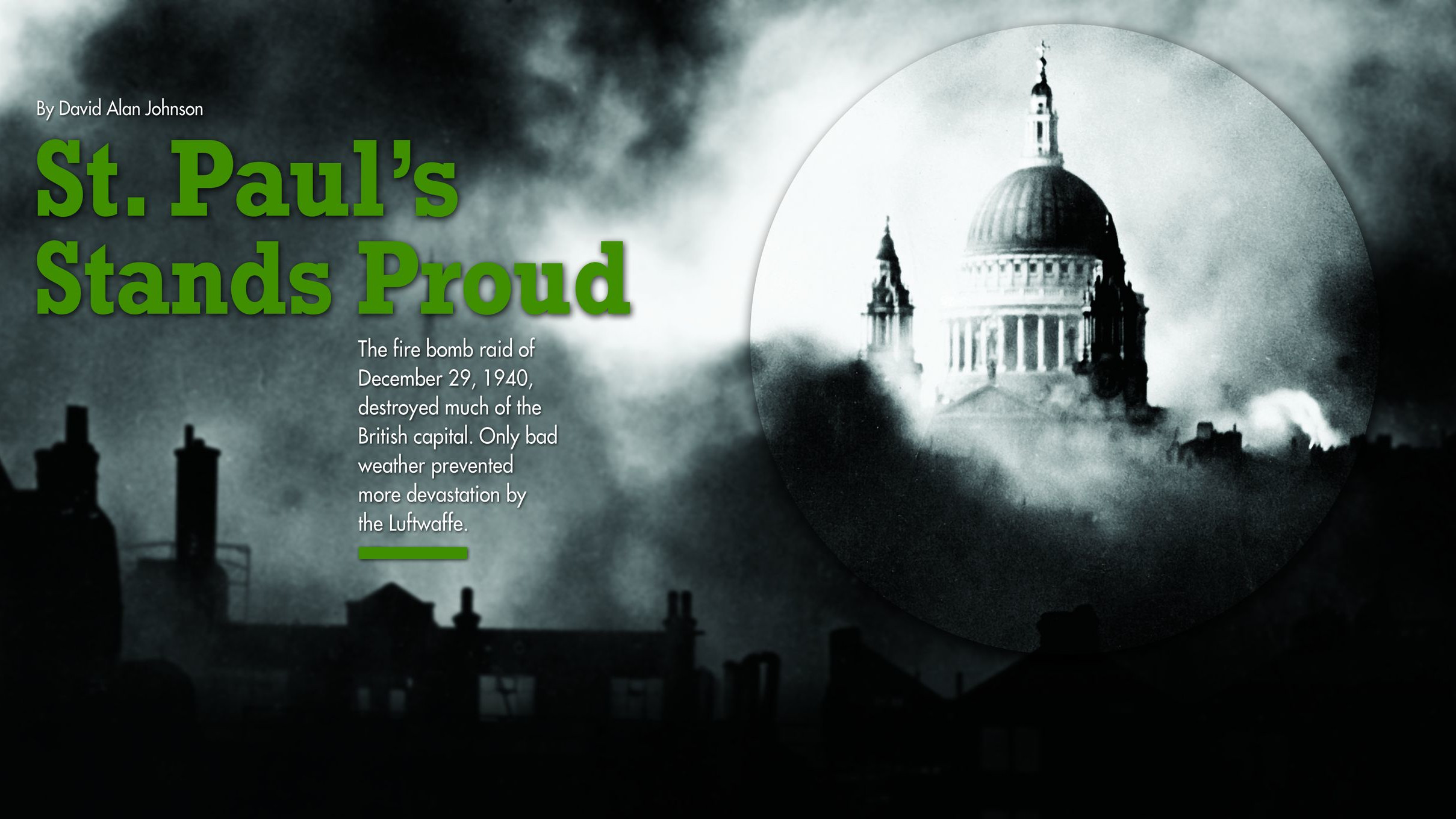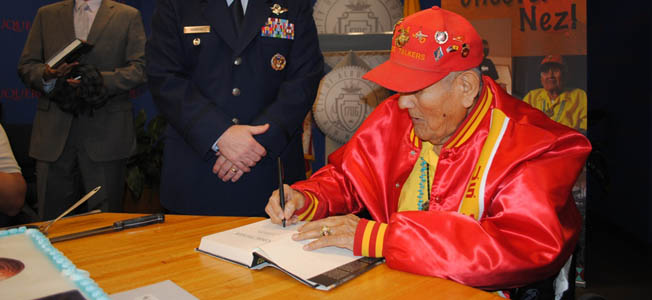By Patrick J. Chaisson
No one ever used the words “graceful” or “elegant” to describe the M3 submachine gun. Instead, those soldiers, sailors and Marines who carried it called the M3 a “plumber’s nightmare” or “the cake decorator.” Its passing resemblance to a mechanic’s lubrication tool, however, led to the weapon’s most common and enduring nickname: “grease gun.”
Designed as an inexpensive replacement for the iconic Thompson submachine gun, this utilitarian firearm overcame early reliability problems to capably serve U.S. forces and their allies for over half a century. Most servicemen who used one in battle admitted the grease gun was an adequate, if not beloved, close-combat weapon, its cheap, ugly appearance notwithstanding.
As early as 1940, officials in the United States Army Ordnance Department began to prepare for the enormous rearmament program their nation would have to undertake if it was to win victory in the approaching world war. Mass production of individual weapons, then, became an industrial priority.
While Ordnance tended to focus its efforts on such shoulder arms as the semiautomatic M1 rifle, certain specialized troops such as paratroopers and vehicle crewmen often required something else: a compact, hard-hitting submachine gun for short-range work. The current-issue Thompson, designed during World War I, met this requirement but had its issues. Put plainly, the Tommy Gun required too much time, steel, and money to manufacture in large numbers. Even a simplified wartime version called the M1A1 cost taxpayers $45.00 per unit ($660.00 in 2021).
Sometime in late 1940, an Army committee recommended the U.S. military develop a more modern submachine gun. In response to that directive, Colonel René R. Studler, the Ordnance Department’s Chief of Small Arms Research and Development, obtained for study a number of foreign weapons to include Nazi Germany’s MP40 machine pistol, the Australian Owen carbine, and Great Britain’s Sten Gun. All compared favorably against the Thompson, especially in terms of weight, size, price, and ease of production.
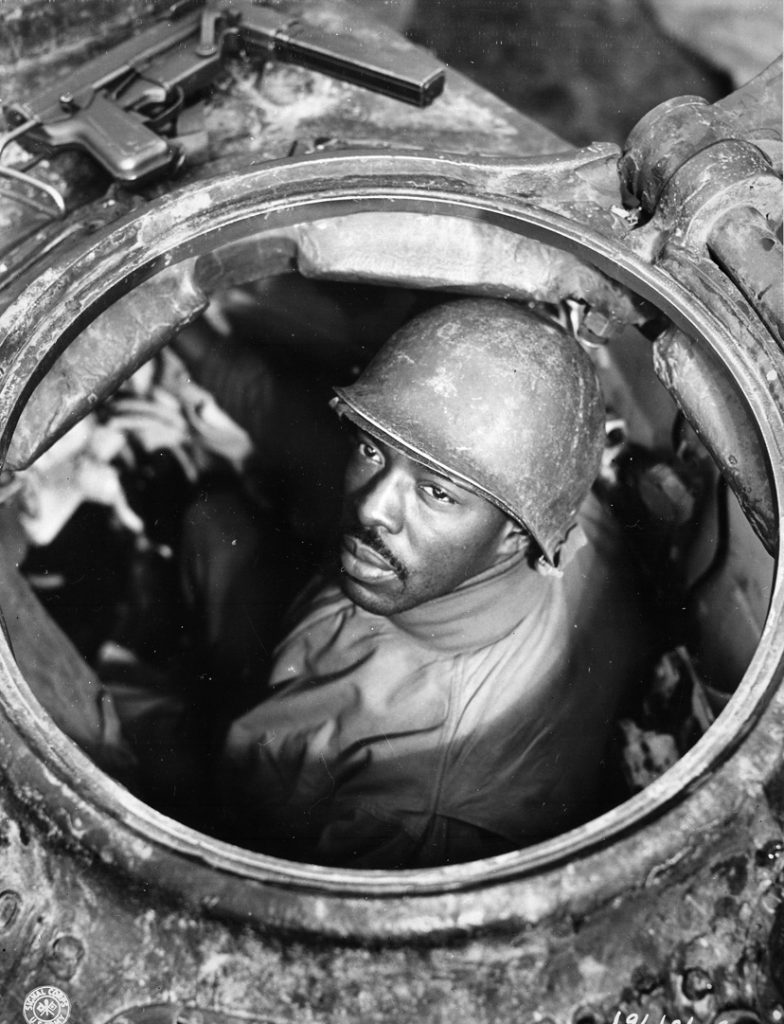
Inspired by these combat-proven firearms, Studler released a list of requirements for the new American sub-gun on February 6, 1941. Iit needed to be sturdy, able to be rapidly and inexpensively manufactured, quickly disassembled for cleaning, and it could not utilize critical wartime materials. The design would chamber and fire U.S. standard .45 -caliber ammunition at a cyclic rate not to exceed 500 rounds per minute. Furthermore, it had to hit a six-foot-square target 90 out of 100 times when fired from a standing position at 50 yards.
Original specifications also called for a weapon that functioned both in fully automatic and semiautomatic modes but this requirement was later deleted, as an automatic-only submachine gun proved easier to produce.
Studler arranged for firearms designer George J. Hyde to work on the project together with Frederick W. Sampson, Chief Engineer for the Inland Division of General Motors Corporation. Hyde, who already had several military small arms to his credit, was to devise the actual weapon while Sampson would apply his industrial experience to create a number of manufacturing “short cuts” that were intended to both speed and simplify production.
Hyde’s first attempt, the T15, was of all-metal construction and featured a sliding wire stock. The engineer revamped his prototype, though, once he learned it no longer required a select-fire feature. This second model became known as the T20.
Five pre-production T20s were hastily fabricated and sent to Aberdeen Proving Grounds in November 1942 for service trials. Representatives from the Army’s Infantry Board, Airborne Command, and Armored Forces Board all evaluated the new firearms, subjecting them to rigorous function testing under simulated combat conditions. Hyde’s design performed exceptionally well, prompting the Ordnance Department on December 24, 1942, to formally recommend its adoption as the “U.S. Submachine Gun, Caliber .45, M3.”
Official approval came on January 11, 1943, and shortly thereafter a manufacturing contract for 300,000 M3 submachine guns was awarded to the Guide Lamp Division of General Motors Corporation. Guide Lamp, based in Anderson, Indiana, normally made automobile headlight assemblies but was now fully involved in war-related production. Workers there had just completed a run of one million FP-45 “Liberator” pistols (another George Hyde invention) for use by resistance fighters.
An uncomplicated design, the M3 submachine gun consisted of only 73 separate parts. Just two major pieces (the bolt and barrel) required costly machining; almost everything else was either pressed or stamped from sheet metal. Extensive use was made of spot welding, a technique that hastened assembly but forever ruined the weapon’s aesthetic appeal.
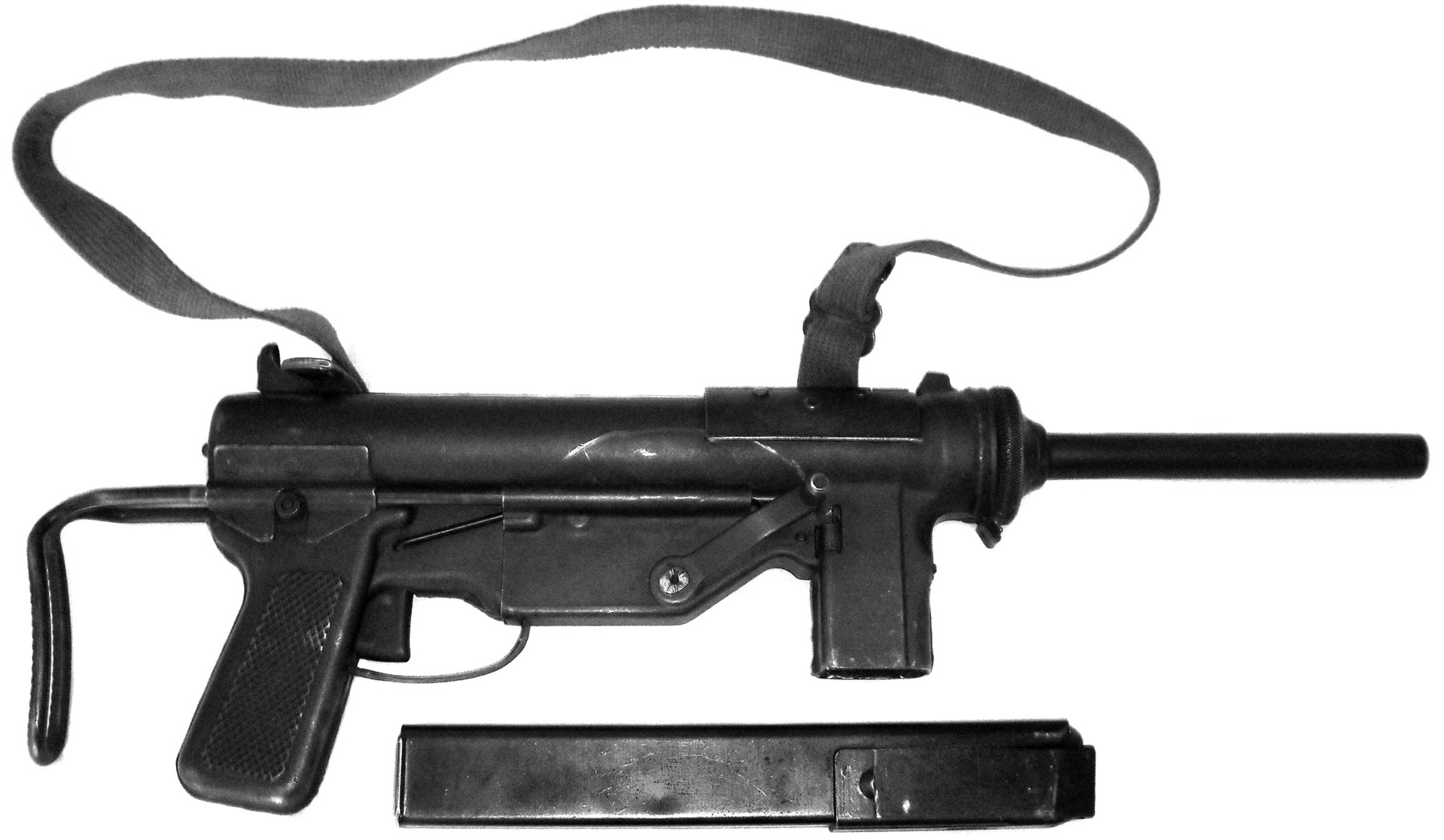
Hyde’s gun measured 29.8 inches with the stock extended and 22.8 inches with the stock closed. It weighed 8.2 pounds empty, but a hefty 9.9 pounds when a fully loaded 30-round box magazine was inserted. Rate of fire was 450 rounds per minute. The M3’s eight-inch barrel generated a muzzle velocity of 920 feet per second, while its rudimentary front post and rear peep sight permitted aimed fire out to 100 yards.
Shooting the M3 was a straightforward process. First, the operator pulled back on its retracting handle to cock the bolt. He next loaded a magazine and closed the dust cover to put his weapon on safe. Flipping open the cover made it ready to fire. A press of the trigger sent the bolt forward, stripping a round of ammunition from the magazine and into the chamber. A raised dimple on the bolt face, acting as a firing pin, struck the cartridge’s primer and set it off. Force of recoil then pushed the bolt rearward against spring pressure, simultaneously extracting and ejecting the empty cartridge case. Although the M3 had no semiautomatic setting, a skilled shooter could “slap” the trigger to fire single shots.
The Office of Strategic Services (OSS), responsible for arming guerilla groups in enemy-held regions of Europe and Asia, ordered a “conversion kit” for Hyde’s sub-gun that enabled it to utilize the 9mm Parabellum—a cartridge widely used by both Allied and Axis forces in World War II. The Rock Island Arsenal made about 500 of these sets, which consisted of a bolt, barrel, pair of recoil springs, and magazine well adapter that accepted the British Sten magazine. Reportedly, Guide Lamp Division manufactured an additional 1,000 M3s chambered for 9mm ammunition.
Finished M3 submachine guns began coming off the assembly line in May 1943. This represented an amazingly short development period, as the weapon was designed, tested, and put into production within seven short months. Given the rushed nature of this process, however, some “teething pains” were inevitable.
The program suffered a major setback when it was learned that inexperienced workers at Guide Lamp had applied too much heat while welding the right and left receiver sections together. Their poor technique led to a warped frame, which kept the M3 from functioning properly. Inspectors rejected nearly the entire first production lot of 20,000 sub-guns due to improperly aligned receivers.
In 1943, the first year of production, 85,130 M3s were made, while in 1944 Guide Lamp delivered a total of 343,372 M3s. The figures for 1945 included 178,192 M3 and 15,469 improved M3A1 submachine guns, for a total of 622,163 pieces built during World War II.
At $20.94 per unit ($313.62 in today’s money), the M3 submachine gun represented a triumph in low-cost mass production. In fact, it was initially categorized as “disposable” — meaning once the firearm became unserviceable its user would discard it and get a new one. While senior ordnance officers may have welcomed this throwaway concept, the idea did not appeal to those soldiers fighting deep inside enemy territory who could not readily exchange their broken grease guns.
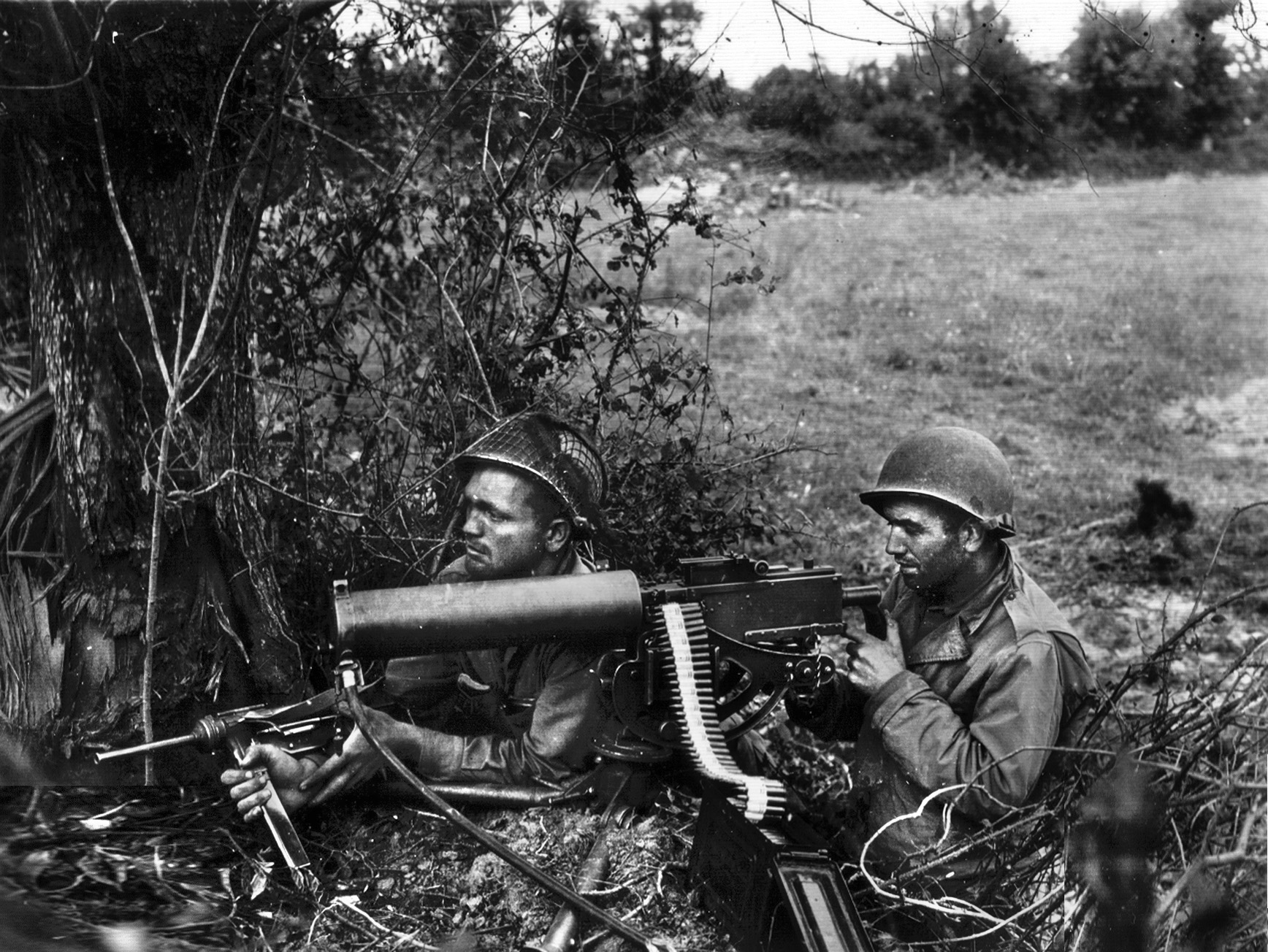
The M3 was first carried into battle by paratroopers of the 82nd and 101st Airborne Divisions during the invasion of Normandy on June 6, 1944. Their reaction was mixed. Some men liked it, noting how the handy grease gun did not need to be disassembled before a jump and could be put into action right after landing. Others despised the M3. The 101st Airborne’s Don Burgett called it “a piece of junk,” while in the 82nd most troopers (if given a choice) preferred to keep their trusty Tommy Guns.
The grease gun’s already-dubious reputation suffered even more when reports began coming back from the field about its flimsy cocking lever and troublesome magazine. Dropping an M3 the wrong way, or even giving it a careless bump, could shear off the firearm’s retracting handle and render it useless. Repair depots across Europe were kept busy modifying damaged M3s with cocking knobs to keep them firing. The idea of a “disposable” submachine gun, it would seem, did not survive contact with the enemy.
Soldiers also complained about the M3’s magazine. It was difficult to load, they said, and jammed whenever even a small amount of dirt got inside. Later, Army Ordnance fielded a loading tool and plastic protective covers to help alleviate these problems.
Some deficiencies were corrected on the spot by resourceful GIs. Sergeant Mack Morriss, a correspondent for Yank Magazine, described how the men of one infantry company told him “the magazine release on the ‘grease gun’ (M3) is too loose, and that when slight pressure is exerted on it as the gun is carried slung on the shoulder the magazine will fall out. Consequently, the men take a ball hammer and bend the release slightly so as to make it more secure.”
A “Battle Experiences” circular issued by HQ U.S. Army European Theater of Operations on March 16, 1945, suggested cutting an M1-rifle operating-rod spring into four equal sections, then using two of those sections to replace the guide-rod springs inside a grease gun. “By doing this,” the author claimed, “we have increased the rate of fire of the M3 Submachine Gun.” The report went on to declare that “this [modification] also makes the weapon steadier and improves its accuracy.”
Starting in mid-1944, newly organized Army and Marine Corps formations began receiving the new submachine gun before heading overseas. Private Dee Eberhart of 3rd Platoon, Company I, 242nd Infantry Regiment, 42nd Infantry Division, trained on the grease gun at Camp Gruber, Oklahoma, that summer. Eberhart said he and his fellow infantrymen “held it in mild contempt,” considering the M3 a cheap knockoff of the German MP40.
Others, however, found the grease gun to be an accurate, reliable weapon that held up well under the rigors of battle. An Army Combat Observations Report dated February 5, 1945, detailed what small-unit leaders in the 99th Infantry Division thought of their new close-combat firearm: “The M3 Submachine Gun is the best weapon we use for patrolling. It can be put into action quickly, and at short ranges is accurate and powerful.” Staff Sergeant J. W. Logan, serving with Co. D, 101st Infantry Regiment, 26th Infantry Division, went on to suggest that each “machine-gun squad leader should carry a submachine gun rather than the M1 rifle.”
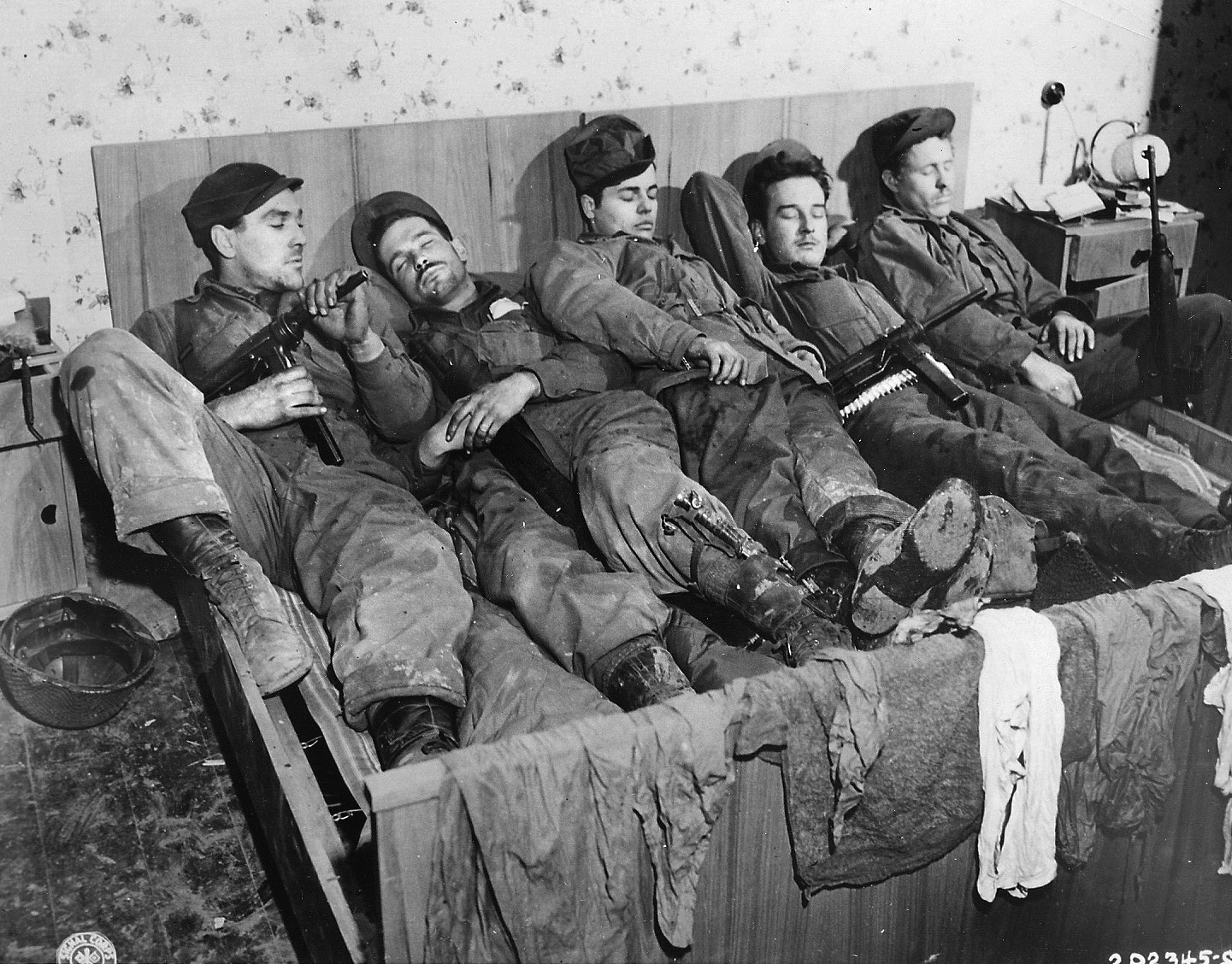
The M3 soon found its way into the hands of such brave men as Medal of Honor recipient T/Sgt Charles F. Carey. An acting platoon leader in the 397th Infantry Regiment, 100th Infantry Division, Carey—armed with a grease gun—persuaded 30-40 German soldiers to surrender on January 8, 1945, at Rimling, France. Later that day, after swapping his M3 for a bazooka and M1 rifle, Carey disabled an enemy tank before shooting its crew one by one as they attempted to escape.
American vehicle crews also carried the stubby little “Greaser.” Late-model Sherman tanks came fitted with as many as five sub-guns for personal protection and local security. Armorer Russell Spooner observed, “An M3, lifted above the hatch opening, could spray the countryside with a lot of bullets in a matter of seconds. “This,” Spooner concluded, “would discourage a nearby enemy from any attempt to interfere with those who needed to abandon their tank.”
Comparatively few grease guns, it seems, saw action in the Pacific Theater. Some were operated by U.S. Marine Corps tankmen on Iwo Jima and Okinawa, while a number of Navy vessels kept M3s in their small-arms lockers for use by shore parties. Evidence also exists that these weapons served with Chinese Army personnel and OSS-led guerillas in Burma.
While the grease gun fought its way across European and Pacific battlefields, back home a concerted effort was being made to correct the firearm’s shortcomings. Beginning in April 1944, experts at the Ordnance Department and Guide Lamp Division worked to develop an improved version that offered increased reliability and ease of maintenance. It was type-classified the M3A1 that December.
One notable change eliminated the M3’s fragile crank-type retracting handle. In its place was a deep cylindrical cut machined into the bolt. To charge his weapon, all an operator needed to do was put his finger into this cocking slot and pull the bolt back until it locked.
Much attention was given to the M3A1’s detachable stock. It could now be used as a barrel wrench and came with a welded bracket to aid in loading magazines. The tip of one wire tube was also threaded for a bore brush, turning the grease gun’s stock into a convenient cleaning rod.
In addition, the M3A1 featured a strengthened rear sight and redesigned dust cover/safety that lessened its tendency to “slam-fire” if dropped accidentally. These modifications, counting the deleted cocking lever, actually reduced the firearm’s overall weight by about three ounces.
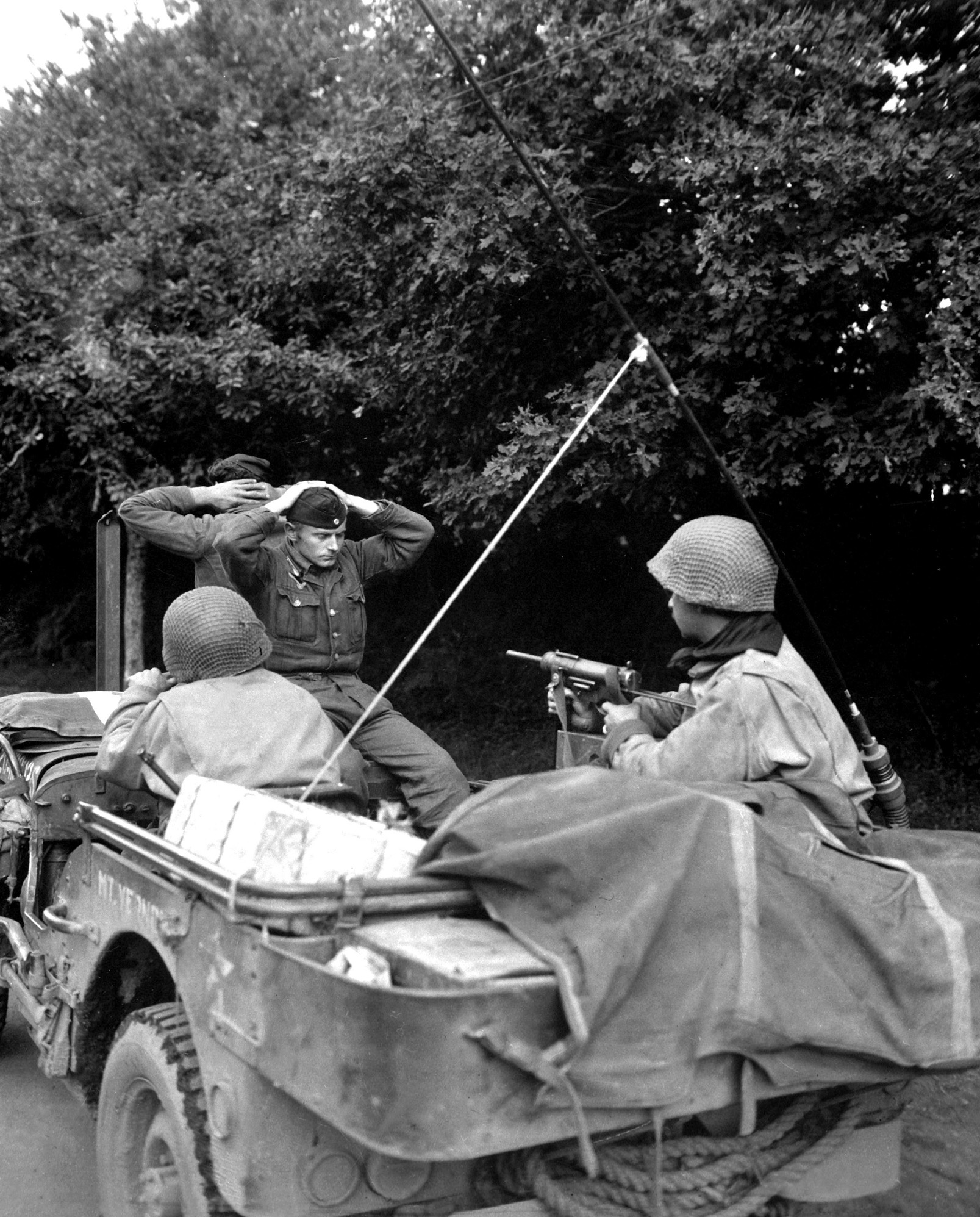
Guide Lamp Division built over 15,000 M3A1s before the war ended, although most original-issue M3s remaining in U.S. government stocks were upgraded to the A1 configuration at some point. The Ithaca Gun Co. manufactured a second run of 33,200 M3A1s during the Korean War; Ithaca also produced thousands of repair parts for these submachine guns then entering service with U.S. allies and client states across the globe.
Aside from World War II-era Lend-Lease customers like France and the Soviet Union, other users included United Nations (UN) contingents from such places as Turkey and the United Kingdom fighting in Korea. The United States also provided a number of M3/M3A1 sub-guns to various Latin American and Southeast Asian governments throughout the Cold War era.
China “cloned” the M3 in 1947, and this so-called Type 36 was occasionally seen in action against UN troops during the Korean Conflict. Also, in the 1950s, Argentina built a variant chambered in 9mm Parabellum known as the P.A.M. 1. This weapon was soon followed by a select-fire version, or P.A.M. 2.
Stateside, the M3A1 served as a testbed for any number of Ordnance Department research and development projects. One bizarre program involved the Krummlauf, or bent barrel, an accessory based on German designs that was intended to shoot around corners or (more likely) out a of tank periscope mount. Another failed enterprise mated the grease gun to an infrared night sight, or sniperscope. Neither scheme went beyond the evaluation phase.
A sound-suppressed version, originally intended for the OSS in World War II, experienced greater success. Technicians at Bell Laboratories developed a special drilled barrel and expansion sleeve to slow propellant gases, thus greatly minimizing the noise of gunfire. Only about 1,000 of these suppressed M3A1s were made, but they armed Army Green Berets in Southeast Asia as well as the elite counterterrorist group known as Delta Force.
The grease gun saw combat during the Korean and Vietnam Wars, as well as in countless smaller operations worldwide. It was withdrawn from general U.S. service starting in 1957, but continued to serve with mechanized and special operations outfits until well into the 1990s. The author, a former tank company commander, had two M3A1s in his unit arms room as late as 2001.
Meant to be fired and then discarded, George Hyde’s M3 grease gun served the U.S. military for a remarkable half century. Scorned by those who first took it to war, this weapon later earned a reputation for utter reliability under the harshest of conditions. To this day it occasionally turns up in places like Afghanistan or the Philippines—anywhere a simply constructed, easy-to-maintain submachine gun might still be needed for short-range battle.
Patrick J. Chaisson is a retired U.S. Army officer and historian who writes from his home in Scotia, NY.
